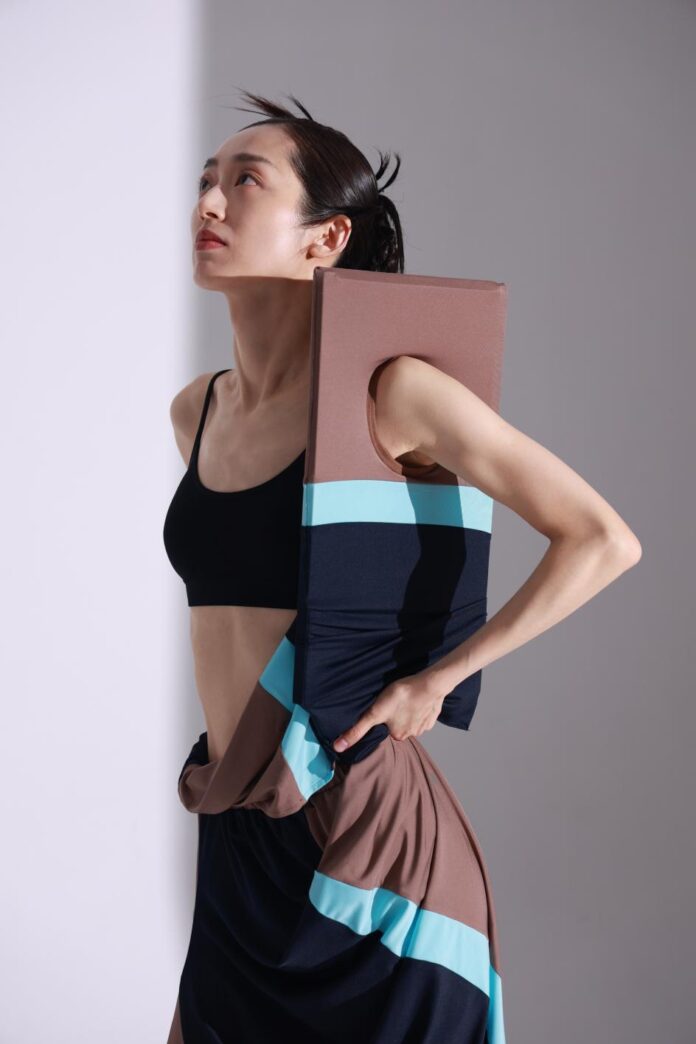Qianqian Jia graduated from the Royal College of Art in 2023 with a Master’s degree in Fashion Design. In 2025, she was invited to participate in Beijing Fashion Week. After graduation, she created several collections, one of which is titled “Need or not.” In this collection, clothing transcends mere fabric; it embodies questions, contradictions, and the silent struggles present in urban life. Instead of providing answers, she presents structured, patchwork, and asymmetrical garments, often using unconventional textures to challenge our perceptions. This collection encourages us to reconsider whether we truly need what we think we need—new dresses, new accessories, new identity labels—or if the pressures of urban life, social algorithms, and a sense of inner emptiness towards a preconceived notion of happiness are simply driving our desires.
“I’ve always wanted to showcase the darker side and raw energy of our generation,” Qianqian Jia stated. She believes that the greatest dilemma facing contemporary society stems from “uncertainty.” This concept is not merely a philosophical abstraction in her work; instead, it represents the tension between concrete structures, materials, and the human body.
The skirt worn by the model features a design made up of multiple color blocks, including brown, ink blue, and ice blue. This combination creates a slight sense of visual dislocation, as if an irregular pause has been introduced into what should be a tidy rhythm. This approach to splicing is more than just an aesthetic choice; it serves as a metaphor for life itself. We often combine, purchase, and construct, believing that having enough will enable us to create a pattern of happiness. However, Qianqian Jia emphasizes that splicing does not equate to wholeness; In fact, it may highlight the need to mend existing fractures.
The silver metallic film material is combined with black fabric to create a cold, futuristic look. The clothing wraps around the body like armor, featuring intentional folds and a structural tautness that reflect the urban experience of being “out of breath yet unable to stop.” The underlying message of the designs is that we are constantly rushing to catch up with projects, chasing deadlines, and sprinting to the next task. In this context, fashion becomes a reward rather than a form of self-expression, and purchasing clothing feels paralyzing instead of fulfilling.
Qianqian Jia does not aim to promote the moral stance of “minimalism” or the “rejection of materialism.” Instead, she is focused on a cultural issue: people consume, hoard, give away, and discard items merely to gain brief psychological comfort. The belief that “if I have it, I will be happy” represents the most deceptive aspect of what she refers to as “raw energy.”
Her design is not light, but never cold. Instead, they are deeply emotional and sincere. Rather than hiding the complexities of the modern human psyche, she uses the structure of her garments, the interplay of materials, and the tension of shapes to convey these emotions. In her work, there is no “pretty” obedience; rather, there is an “uncertain” confession.
In these chaotic times, what is scarce is not trends but true fashion, which challenges us to think. Rather than presenting a series of answers, 《Need or not》provokes a redefinition of happiness, desire, and the logic of consumption. If fashion acts as a mirror of reality, Qianqian Jia offers a more honest reflection. It doesn’t have any filters; Instead, it reveals the raw energy within us that is stirred by time and desire. Amidst the chaos, this may represent our truest state.


